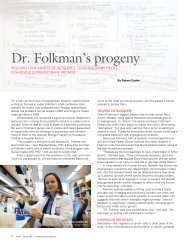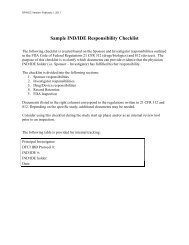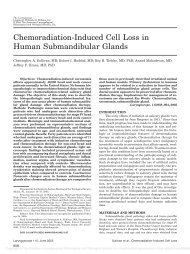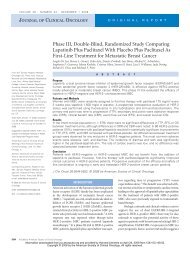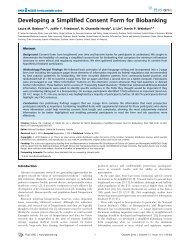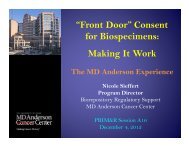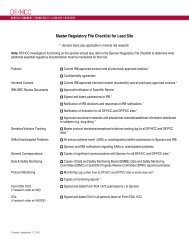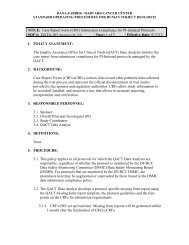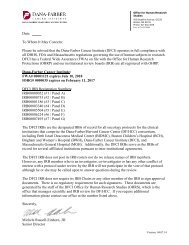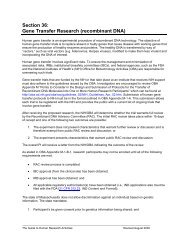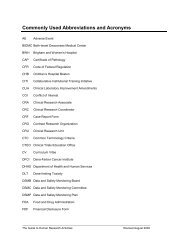Scientific Presentations Summer 2009 - Dana-Farber/Harvard ...
Scientific Presentations Summer 2009 - Dana-Farber/Harvard ...
Scientific Presentations Summer 2009 - Dana-Farber/Harvard ...
You also want an ePaper? Increase the reach of your titles
YUMPU automatically turns print PDFs into web optimized ePapers that Google loves.
Determining the Mechanisms of DNA Double-Strand Break in<br />
Heterochromatin & Euchromatin<br />
Raquel L. Graham<br />
Mentor: Peter O’Donovan, PhD<br />
<strong>Scientific</strong> Advisor: David Livingston, MD<br />
<strong>Dana</strong>-<strong>Farber</strong> Cancer Institute<br />
Our genetic material DNA resides in a chromatin structure composed of DNA and<br />
histone proteins. There are two forms of Chromatin—heterochromatin and euchromatin.<br />
Heterochromatin is tightly compacted and transcriptionaly inactive, whereas<br />
euchromatin is less compacted and transcriptionaly active. Chromatin impacts all<br />
DNA Metabolic processes, including DNA damage and DNA repair. The DNA double-strand<br />
break [DSB] is the most toxic of various types of DNA damage because<br />
both DNA strands are damaged. There are two major categories to repair DNA DSB:<br />
homologous recombination and non-homologous endjoining. Homologous recombination<br />
is error free and non-homologous endjoining is error prone. It has been<br />
suggested that there are differences in DNA repair between heterochromatin and euchromatin.<br />
The purpose of this study is to find out whether or not there are differences<br />
in mechanisms of DNA DSB repair of heterochromatin and euchromatin. To test<br />
this hypothesis, we have developed a system that allows us to generate a single DNA<br />
DSB in a cell. The DNA DSB will be either in heterochromatin or euchromatin. We<br />
will be using an enzyme called ISce-I and female mouse embryonic fibro-blast cells<br />
[MEFs]. A restriction site will be placed in the X Chromosome of the MEFs because<br />
the female has two X Chromosomes, active X (euchromatin) and inactive X (heterochromatin).<br />
Then ISce-I will be introduced into the nucleus to generate a DNA DSB<br />
in the X Chromosome. After DNA DSB repair, genomic DNA will be extracted from<br />
cells, PCR amplified, and sequenced for the region around DSB. The sequence will<br />
tell what repair mechanism was used for DSB, i.e. homologous recombination or<br />
non-homologous endjoining. Therefore we will be able to determine whether different<br />
repair mechanisms were used between heterochromatin vs. euchromatin.



